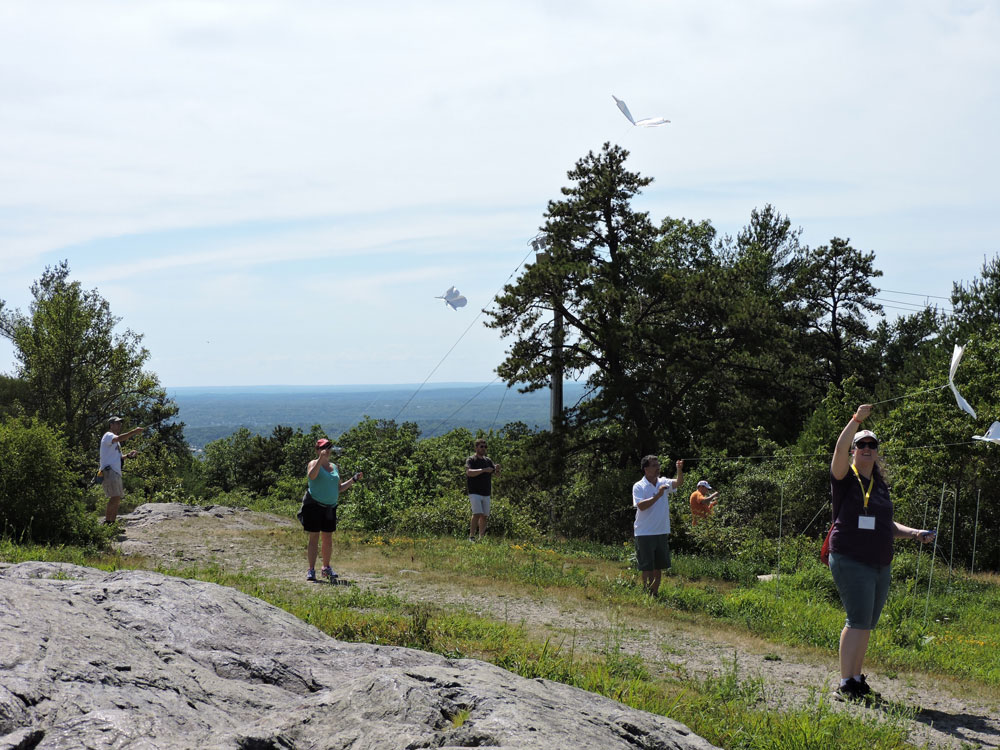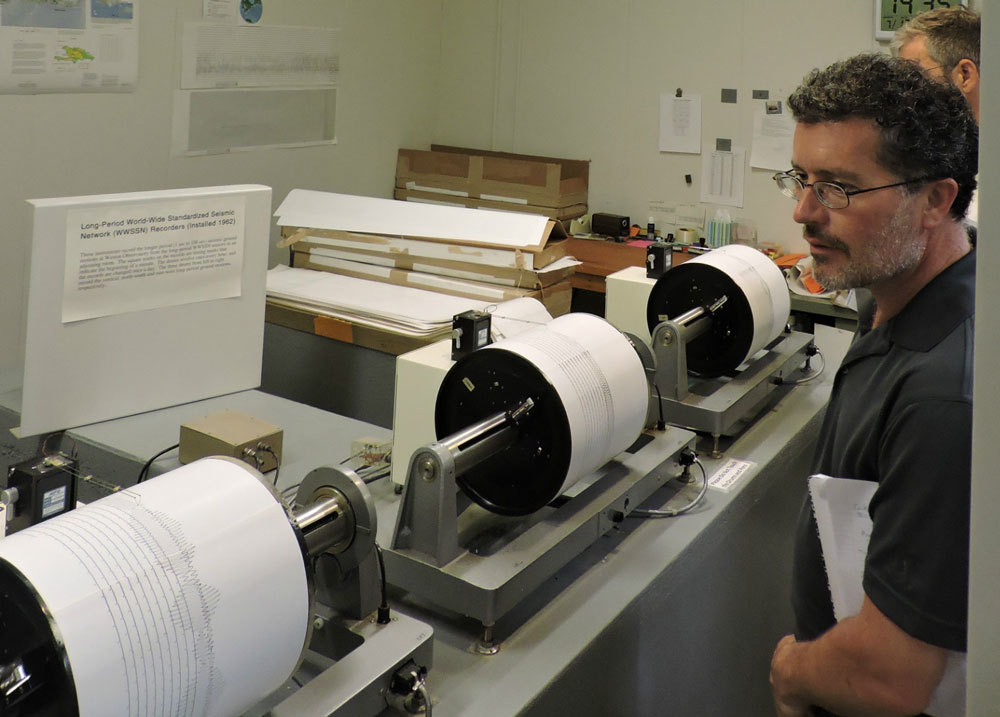Friday, September 23, 2016
For Immediate Release
Teachers Connect Nature Study to Science Practices During MITS Summer Professional Development Institute
Fourteen 3rd-8th grade teachers from twelve schools spent part of their summer vacation experiencing the fun and excitement of participating in inquiry-based STEM activities. These teachers were engaged in the Museum Institute for Teaching Science (MITS)’s Metro South Region Summer Professional Development Institute, Feathers, Rocks, Flights, Wildlife and Shocks: The Importance of Human Connections with Nature.
The course was offered as a collaborative effort of Mass Audubon Blue Hills Trailside Museum, Blue Hill Observatory and Weston Observatory. During the week, teachers explored topics ranging from pollinators and wildlife management to meteorology and seismology, as they participated in hands-on, minds-on investigations to take back to their classrooms.
At Mass Audubon Blue Hills Trailside Museum, Assistant Director Gail Janeczek and Teacher Naturalist Perry Ellis led participants in a series of activities that prompted questions about their environment. For example, “Why do bees collect pollen? What happens to plants when deer population spikes? What is the story behind that rock formation? How are owl feathers unique?” These types of questions guided teachers as they gathered resources to adapt their classroom curriculum into more inquiry-based activities.
The teachers read about tiny flying pollination robots, observed behaviors exhibited in the museum’s beehive and worked in groups to conceptually engineer man-made pollinating devices that could be used to supplement pollination of flowering food crops. Part of the goal of the institute was to help teachers bring science practices, which are embedded in the newly released state Science and Technology/Engineering Standards, into their teaching.
Just as bees breakdown nectar to make honey, teachers can breakdown the components of their experience into the these science practices: asking questions, constructing explanations, engaging in argument from evidence, and communicating information.
Participants explored connections in the natural world and applied this learning to their science teaching. They practiced how to help students develop questions to investigate that relate to the Science and Technology/Engineering Standards. For instance — “What happens to plants when deer population spikes?” To help answer their question and to illustrate resource management techniques such as the
Blue Hills State Reservation White-tailed Deer Management Plan, they played the game Oh, Deer!, during which participants pretended to be deer seeking food, water, or shelter. Mock population trends were charted to show that wildlife population numbers are directly correlated to resource availability. Teachers might extend this activity with their students by evaluating competing design solutions for protecting an ecosystem or explaining how changes to the biodiversity of an ecosystem may limit the availability of resources.
On a clear, sunny day, the group hiked to Blue Hill Observatory for weather study with Program Director, Don McCasland. At the observatory, participants were fascinated by the array of data collection equipment in the weather tower. They also enjoyed some time building and flying kites and discussing forces of flight, such as lift and drag. During the school year, the teachers will investigate local weather data with their students to describe and predict typical seasonal weather, regional climate differences, and weather damage reduction.
After looking up, participants got down to the Earth at Weston Observatory. Seismic Analyst and Educational Seismologist, Anastasia Moulis, presented instructional tools to inspire students’ interest in Earth Science. Fourth grade science covers descriptions of patterns of Earth’s features and their locations relative to boundaries between continents and oceans. It also includes the evaluation of solutions to reduce the impacts of a natural event such as an earthquake.
Participants listened to earthquake recordings, learned how seismographs work and watched a video clip of an earthquake to review S and P waves. Then, participants built and tested their own seismometers that could read wave type and direction.
At the conclusion of time spent on-site, MetroSouth Region Summer Professional Development Institute participants wrote unit plans to tie the week’s activities to their classrooms. While creating their portfolios of resources, participants linked lessons to the newly revised Massachusetts Science and Technology/Engineering Curriculum Framework. They identified which of the eleven levels of inquiry instruction they plan to utilize in the upcoming school year to engage their students in Science and Engineering Design Practices. By incorporating their new ideas into their curriculum, the teachers will transform their classrooms into places of inquiry-based learning.
More About MITS Summer Professional Development Institutes
Five regional Summer Professional Development Institutes (two hybrid and three one-week institutes) were offered this year. MITS recognizes that summer is when teachers turn their attention to planning for the following school year and thus institutes are designed to help teachers collect resources and ideas for their grade level specific, standards correlated STEM curriculum instruction. Participants in MITS institutes earn Professional Development Points (PDPs) and can also earn graduate credit.
###
The Museum Institute for Teaching Science specializes in providing hands-on, minds-on, inquiry-based STEM professional development for formal and informal educators. For more information, visit www.mits.org or call 617-328-1515.




